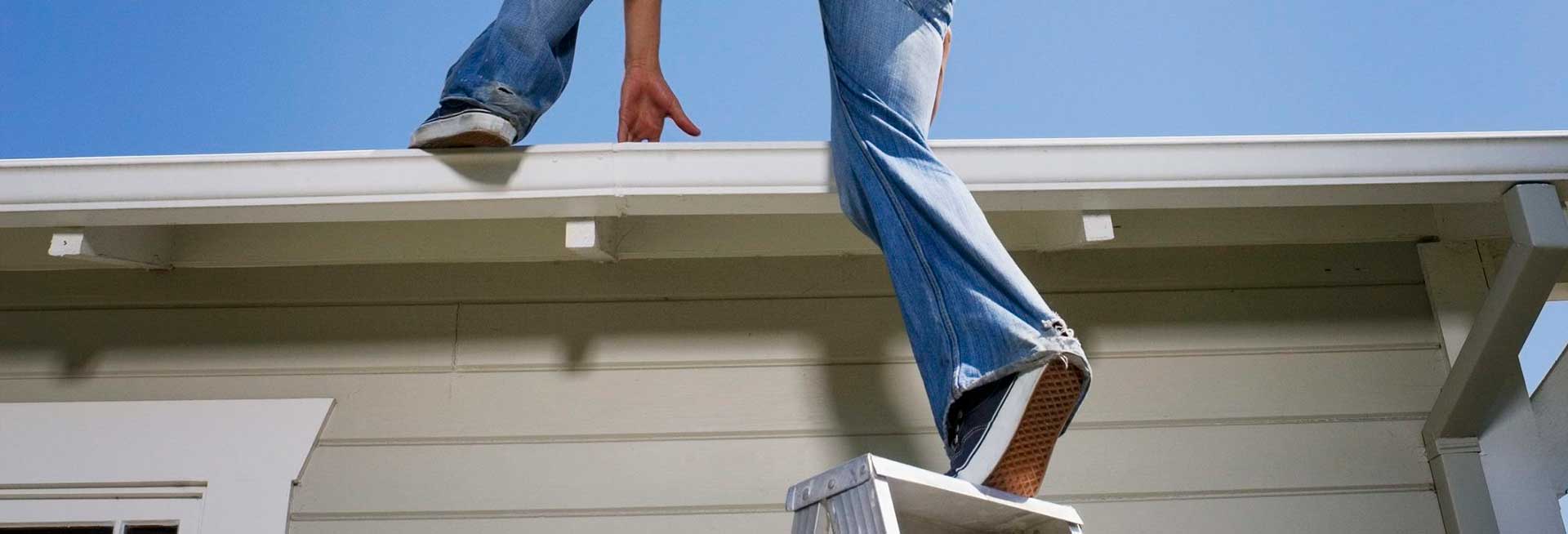Climbing a ladder can seem like the most mundane and ordinary of home maintenance tasks.
But it’s also one of the most deadly.
Ladders are the consumer product most often associated with home “DIY”-related hospitalisations in Australia. For every 175 people hospitalised after ladder accidents, one dies. And there are plenty of people being hospitalised because of ladders.
Sobering statistics
From 2001-2005, over four and a half thousand people presented to Victorian hospital emergency departments after falling from a ladder. 160 of them experienced major trauma injuries. And those are just the statistics from one Australian state.
Most falls from ladders happen from two to three metres, but even a fall from one metre can be deadly. Those falling from ladders often sustain head and torso injuries, resulting in death or lifelong disability.
It should also be noted that the majority of people who sustain major trauma after a ladder fall are aged over 50. Men account for four in every five ladder falls.
What can you do?
We could say from the statistics that a great way to avoid ladder accidents is to be a female in your twenties… but a better conclusion is that one of the best ways to minimise the risk of home ladder accidents is to minimise the occasions when you use a ladder.
WorkSafe already recommends a variation on this approach in commercial contexts. By introducing regulations that emphasise using alternatives to ladders wherever possible, they’ve significantly reduced ladder-related deaths and serious injuries.
For home owners, this is clearly a very good first step. But if you want to really minimise your ladder use, you also need to eliminate the need for a ladder in the first place.
Ladder use around your home
Cleaning your gutters is one of the most dangerous ladder-related home maintenance tasks.
Gutters that are clogged with leaves, tennis balls or nastier things like dead rats and possums significantly raise the risk of damage to your home from water overflow, bushfire and even flooding. As such, keeping your gutters clean is important.
For most people, that means climbing up a ladder and onto the roof. But it doesn’t have to be that way.
A different approach to gutter cleaning
By installing the right gutter mesh over your gutters, you can significantly reduce the need to clean them. That’s because properly installed gutter mesh largely prevents leaves, debris and pests from entering your gutters.
And if you don’t have leaves, debris and pests congregating in your gutters, you don’t need to clean them nearly as often.
In fact, in 2014, Monash University’s Injury Research Institute actually recommended that legislative bodies consider mandating the installation of gutter mesh or other gutter guard products in domestic building design codes for the purpose of reducing home ladder-related injuries and deaths.
Getting gutter mesh right
If you want your gutter mesh to keep leaves and pests from entering your gutters, you need to ensure you have the right mesh for your property’s location and situation.
For example, if you have a home surrounded by jacaranda trees that drop small leaves on your roof, mesh with a large aperture (hole size) won’t keep your gutters clean. In fact, it will make cleaning more difficult, because while the jacaranda leaves will be able to get through your mesh, you won’t be able to get through to clean them out.
Because of this, it’s vital that you choose the most appropriate gutter mesh for your home.
(Our easy-to-use Mesh Matcher tool can help you identify the optimal gutter mesh for your home. Use it now here)
Stay safe
Using the right gutter mesh on your home is a great way to minimise the need for gutter cleaning – and thus minimise the need to climb a ladder in the first place.
In the meantime, if you do have to use a ladder for any home maintenance or DIY tasks, please remember to stay safe!
Mitra, Cameron & Gabbe, The Medical Journal of Australia, 2007
Oxley, Ozanne-Smith, O’Hern, Kitching, Report on the Reduction of Major Trauma and Injury from Ladder Falls, 2014
Spooner, The Age, February 2016
